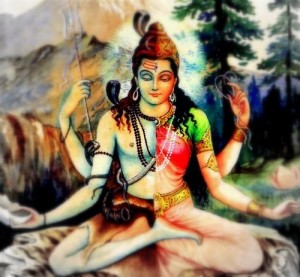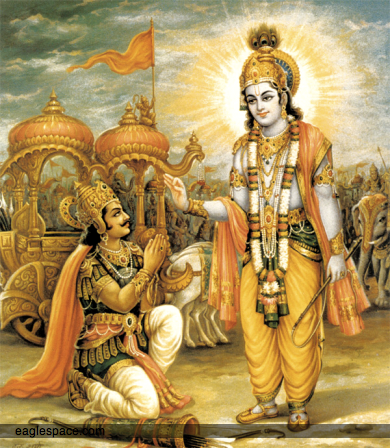Glossary 1

-
Aaroodha
Self-Realized, One who abides in the Self
-
Abhyasa
Practice. Spiritual practices. Self-Enquiry, Meditation, Contemplation. -
Advaita
Advaita means nondual or "not two." This oneness is a fundamental quality of everything. It is the one Real Being. Advaita (Sanskrit); not-two, "no second") refers to the idea that the true Self, Atman, is the same as the highest Reality, Brahman. It gives "a unifying interpretation of the whole body of Upanishads", providing scriptural authority for the postulation of the nonduality of Atman and Brahman. Followers seek liberation/release/salvation by acquiring vidya (knowledge)[of the identity of Atman and Brahman. It emphasizes Jivanmukta, the idea that moksha (freedom, liberation) is achievable in this life.
-
Advaita
Advaita Vedanta is a school of Hindu philosophy and religious practice, and one of the classic Indian paths to spiritual realization. Advaita (Sanskrit: not-two, "no second") refers to the idea that the true Self, Atman, is the same as the highest Reality, Brahman. It gives "a unifying interpretation of the whole body of Upanishads", providing scriptural authority for the postulation of the nonduality of Atman and Brahman. Followers seek liberation/salvation by acquiring vidhya (knowledge) of the identity of Atman and Brahman. It emphasizes the Jivanmukhta, the idea that moksha (freedom, liberation) is achievable in this life. Please visit this site for further info. -
Aham
Self; I AM. -
Ahimsa
~~~ Non-injury. Principle of non-violence towards everyone including animals. Ahimsa's precept of 'cause no injury' includes one's deeds, words, and thoughts. -
Ajnani
A Soul who is ignorant of his Real Blissful Self. One who does not know and abide in the Real Self. -
Ananda
Happiness; Bliss. -
Anandamaya
Blissful; Filled with Happiness. -
Anatma
Non-self -
Annamalai
It is the name for Arunachala in Tamil. -
Annamaya
Made up of food; composed of food. -
Anthara
Inner; inward -
Aradhana
Worship of God. -
Ardhanareeswara
~~~ Lord Shiva and Goddess Parvati in the form of half man and half woman united as one Being. [caption id="attachment_3776" align="aligncenter" width="300"] Ardhanareeswara-form-of-shiva-parvati[/caption]
Ardhanareeswara-form-of-shiva-parvati[/caption]
-
Arjuna
~~~ Arjuna was the 3rd of the Pandava brothers. He was a brave, triumphant warrior. He is considered as the protagonist of the Mahabharata with Krishna and plays a key role in the Bhagavad Geeta. [caption id="attachment_3803" align="aligncenter" width="390"] Arjuna[/caption]
Arjuna[/caption] -
Arul
Tamil word "Arul" means Grace of God or Guru. -
Arunachala
Arunachala (Aruṇācala, "red mountain") refers to the holy hill at Tiruvannamalai in Tamil Nadu, India. The hill is also known by the names Arunagiri, Annamalai Hill, Arunachalam, Arunai, Sonagiri and Sonachalam. It is one of the five main shaivite holy places in South India. The Annamalaiyar Temple, a temple of Lord Shiva is located at the base of the hill. Every year in the Tamil month of Karthigai (October–November), the Karthigai Deepam (Light) is lit atop the hill. It is also an important place for devotees of Sri Ramana Maharshi with Sri Ramana Asramam situated at its foothills. -
Arunachala Ashrama
~~~ Arunachala Ashrama is located in New York, USA. It is dedicated to the Life and Teachings of Bhagavan Sri Ramana Maharshi.
-
Asana
Pronounced "aasana". Posture; sitting position for meditation; yoga exercise. -
Asat
False; Unreal -
Ashram
~~~ Traditionally, an ashram is a spiritual hermitage, a monastery, a monastic community, or a place of religious retreat for Hindus.
-
Ashramas
The four Ashramas are orders or stages of life. They are Brahmacharya (Youth/Bachelor - dedicated towards education and development of strong values), Grihastha (Householders - maintaining a good, happy family and being a good example for children and society), Vanaprastha (Retirement - having completed one's duties, taking to contemplation, guidance and peaceful activities), and Sannyasa (Renunciation - giving up attachment to worldly, material desires to achieve oneness of the soul with the supreme being).
-
Athirai
Athirai is the day on which the moon is in conjunction with the constellation Ardra. -
Atman
Ātman (pronounced Aatman) means the Self as Being, Consciousness, Bliss. It is a Sanskrit word that means inner self or soul. In Hindu philosophy, especially in the Vedanta school of Hinduism, Ātman is the first principle, the true self of an individual beyond identification with phenomena, the essence of an individual. In order to attain liberation, a human being must acquire self-knowledge (atma jnana) which is to realize that one's true self (Ātman) is identical with the transcendent self Brahman.
Please visit this site for further info. -
Avidya
~~~ Ignorance. Not Knowing one's true Self.
Conversations with Ramana Maharshi are rare and priceless. He seldom wrote anything on his own accord. But out of His immense kindness and love, sometimes he answered questions from Devotees on Meditation, Devotion to God and Life. Reading them, contemplating on them and try to practice them are bound to offer great guidance to every true seeker of Real Happiness.
Sometimes Sri Ramana Maharshi used words in Sanskrit or devotional words and scriptural texts. This Glossary provides some insight into those.



Be First to Comment